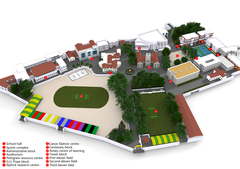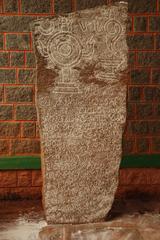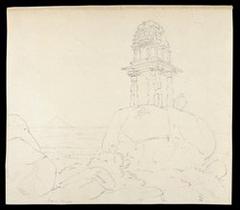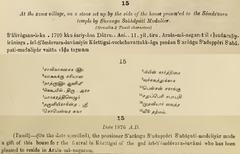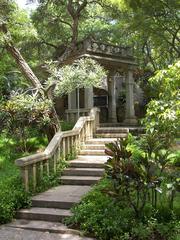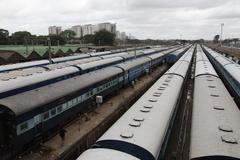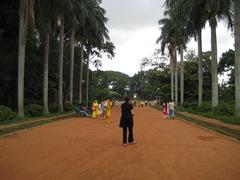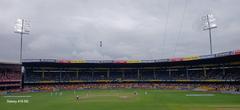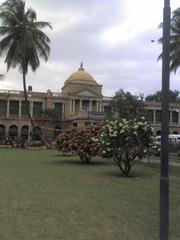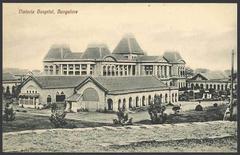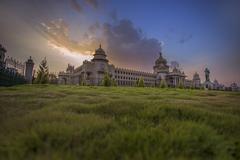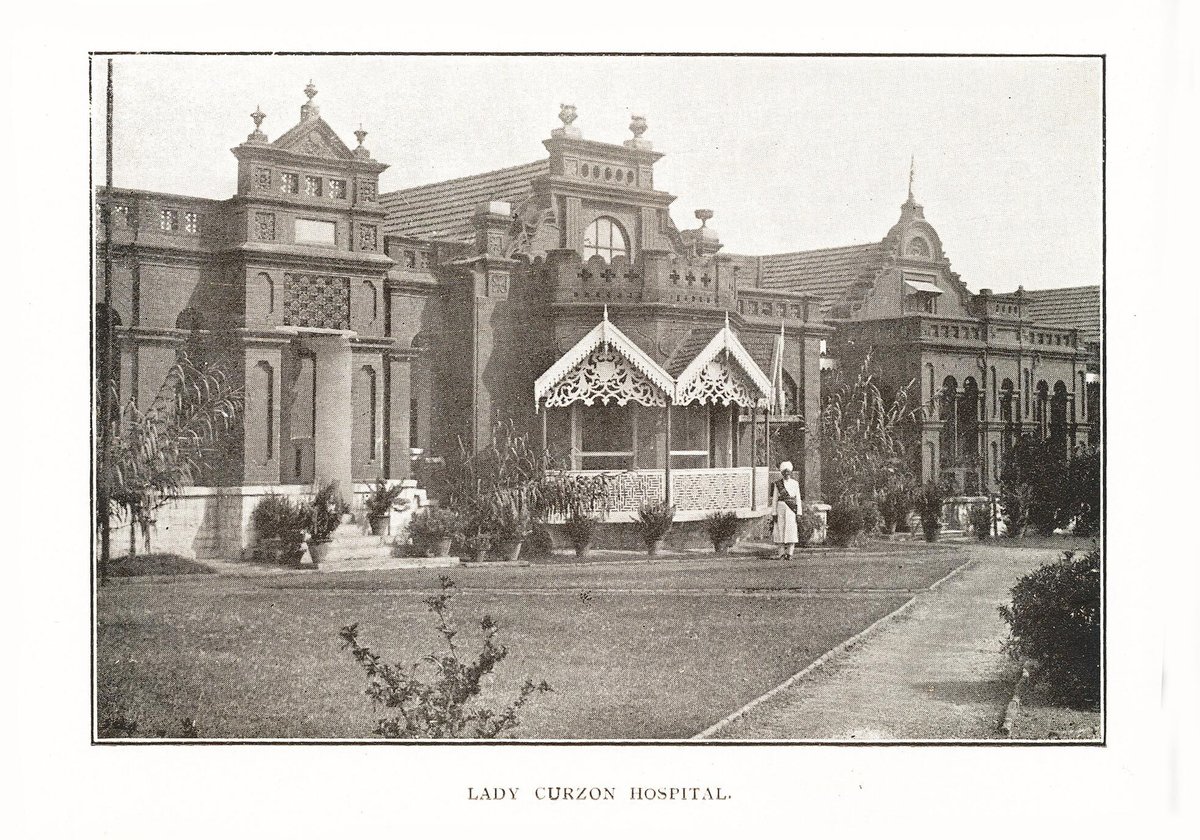
Bowring & Lady Curzon Hospitals, Bengaluru: Visiting Hours, Tickets, and Historical Significance
Date: 15/06/2025
Introduction
Bowring & Lady Curzon Hospitals (BLCH) in Bengaluru are not just premier multispecialty medical institutions—they are living monuments that trace more than 150 years of the city’s medical, architectural, and social history. Established in 1867 during the British colonial era, these hospitals have evolved from early centers of organized healthcare for colonial and local populations into one of India’s most prominent heritage hospital complexes. Their importance is underscored by their role in public health crises like the plague epidemic of 1898 and their connection to Nobel laureate Sir Ronald Ross’s malaria research (Navrang India).
Today, BLCH functions as a vital government hospital affiliated with Sri Atal Bihari Vajpayee Medical College and Research Institute, while simultaneously standing as a celebrated example of Indo-Saracenic and Victorian architecture. This guide provides up-to-date visitor information—including entry policies, visiting hours, accessibility, and heritage tours—and explores the hospital’s historical and cultural significance.
Table of Contents
- Historical Overview
- Colonial-Era Architecture
- Integration with Bengaluru’s Urban Landscape
- Social and Cultural Impact
- Preservation and Conservation
- Infrastructure and Modern Facilities
- Medical Specialties and Teaching
- Visitor Information
- Heritage Importance
- FAQs
- Conclusion & Visitor Recommendations
- References
Historical Overview
Founding and Early Years (1867–1890s)
Bowring & Lady Curzon Hospitals began as Bengaluru’s first major civil medical facility, founded in 1867. Named for Commissioner Lewin Bentham Bowring and Lady Curzon, the hospital was intended to serve both European and Indian communities. The hospital expanded rapidly, mirroring Bengaluru’s own growth, and quickly became a keystone of public health and medical education.
The Plague Epidemic of 1898
During the devastating plague outbreak in 1898, the hospital played a crucial role in patient care, vaccination drives, and implementing city-wide sanitation reforms. Its actions during this crisis helped shape Bengaluru’s later public health policies (New Indian Express).
The Ronald Ross Connection
BLCH is historically significant as one of the sites where Sir Ronald Ross conducted pioneering research on malaria transmission by mosquitoes—work that earned him the Nobel Prize in Medicine in 1902.
Colonial-Era Architecture
The BLCH campus is a striking blend of Indo-Saracenic and Victorian architectural styles (Karnataka State Gazetteer). Key features include:
- Red Brick Facades: Durable and visually striking, typical of colonial institutional buildings.
- High Ceilings and Arched Windows: Designed for ventilation and natural light, ideal for Bengaluru’s climate.
- Decorative Elements: Lady Curzon Hospital’s ornate cornices, cast-iron railings, and stained-glass panels reflect Victorian tastes (Deccan Herald).
- Open Courtyards and Wide Verandas: Functional for patient care and circulation.
Integration with Bengaluru’s Urban Landscape
Located in the heart of Shivajinagar, BLCH is woven into the city’s heritage zone, close to St. Mary’s Basilica, Russell Market, Bangalore Fort, and Cubbon Park (Bengaluru Smart City). The hospital’s pavilions and courtyards reflect colonial planning, segregating patient care, administration, and support services for efficiency—a model that influenced later Indian hospital design.
Social and Cultural Impact
For over 150 years, the hospitals have provided essential care to all communities. Lady Curzon Hospital notably pioneered women’s and children’s healthcare, while Bowring Hospital served the general population. As teaching hospitals, they have played a key role in medical education and research in Karnataka (BMCRI).
Preservation and Conservation
Despite urban pressures, BLCH’s original structures have been carefully preserved and sensitively upgraded. Restoration projects have retained the signature brickwork and timber details, even as modern medical facilities have been integrated (Times of India). Heritage conservation is actively supported by the Karnataka Department of Archaeology and INTACH (Karnataka Heritage, INTACH Bengaluru).
Infrastructure and Modern Facilities
- Capacity: Expanded from 104 original beds to several hundred.
- Emergency & OPD: 24/7 emergency care, robust outpatient services (ListMyClinic).
- Diagnostics: Includes digital X-ray, ultrasound, CT, MRI, and advanced pathology labs (Wikipedia).
- Operation Theatres: Multiple advanced theatres, ICU, NICU, and HDU facilities.
- Pharmacy & Blood Bank: 24-hour services for patients and emergencies.
- Teaching & Research: Affiliated with Sri Atal Bihari Vajpayee Medical College, supporting clinical training and infectious disease research (Navrang India).
Medical Specialties and Teaching
- Core Specialties: General Medicine, Surgery, Cardiology, Dermatology, Neurology, Microbiology, Cardiothoracic Surgery.
- Additional Departments: Obstetrics & Gynecology, Pediatrics, Orthopedics, ENT, Ophthalmology, Dentistry.
- Education: Regular teaching, seminars, and research projects for medical students and professionals.
Visitor Information
Visiting Hours & Entry
- General Visiting Hours: 9:00 AM to 5:00 PM for heritage areas (administrative and architectural sections; clinical zones restricted to patients and staff).
- Patient Visiting Hours: Usually 10:00 AM–12:00 PM and 4:00 PM–6:00 PM; confirm with hospital administration as timings may change due to health protocols.
- Entry Fee: No entry fee for visitors; government-issued ID may be needed for patient visits.
Guided Tours & Photography
- Heritage Walks: Occasional guided tours and walks arranged by INTACH and local history groups (INTACH Bengaluru).
- Photography: Permitted in outdoor heritage areas with permission; strictly prohibited in patient and clinical areas.
Accessibility & Amenities
- Wheelchair Ramps & Elevators: Integrated into both heritage and modern buildings.
- Restrooms & Waiting Areas: Available throughout the campus.
- Cafeteria & Canteen: Affordable food options for visitors.
- Multilingual Staff: Kannada, English, Hindi, and Tamil.
Getting There & Parking
- Address: Shivajinagar, Bengaluru, Karnataka 560001 (Google Maps)
- Nearest Metro: Majestic Metro Station (approx. 2 km)
- Buses: Frequent service to Shivajinagar bus terminus.
- Parking: Limited on-site; public lots nearby.
Heritage Importance
Bowring & Lady Curzon Hospitals are recognized as central to Bengaluru’s built heritage. Their design has influenced hospital architecture across South India, and ongoing conservation efforts ensure their continued role as heritage landmarks (Indian Institute of Architects).
Frequently Asked Questions (FAQ)
Q: What are the visiting hours?
A: Heritage areas are open from 9:00 AM to 5:00 PM daily; patient visits are usually allowed 10:00 AM–12:00 PM and 4:00 PM–6:00 PM.
Q: Is there an entry fee?
A: No, entry to hospital grounds and heritage sections is free.
Q: Are guided tours available?
A: Yes, but require advance arrangement with the hospital or heritage organizations.
Q: Can I take photographs?
A: Only in non-clinical heritage areas, with permission.
Q: Is the hospital accessible for people with disabilities?
A: Yes, ramps and lifts are provided.
Q: How do I get there by public transport?
A: BLCH is easily accessible via metro and city buses to Shivajinagar.
Conclusion & Visitor Recommendations
Bowring & Lady Curzon Hospitals are at the intersection of Bengaluru’s colonial past and its modern healthcare achievements. Visitors can explore the heritage exteriors and administrative buildings, join heritage walks, and immerse themselves in the story of one of India’s oldest hospitals. The campus’s location makes it a convenient stop for those interested in the city’s architectural and medical history, especially when paired with nearby sites like Bangalore Fort and Cubbon Park.
To get the most from your visit:
- Plan during heritage visiting hours (9:00 AM–5:00 PM)
- Consider booking a guided tour for in-depth historical insights
- Respect hospital protocols and patient privacy at all times
- Stay updated on special events through the hospital’s official website or heritage organizations
For curated guides, visual galleries, and live updates on Bengaluru’s historical sites, download the Audiala app and follow official social media channels.
References and Further Reading
- Navrang India
- Deccan Herald
- Bengaluru Smart City
- BMCRI
- Times of India
- INTACH Bengaluru
- New Indian Express
- Karnataka State Gazetteer
- ListMyClinic
- Wikipedia
- Karnataka Heritage
- Indian Institute of Architects
- PrognoHealth


